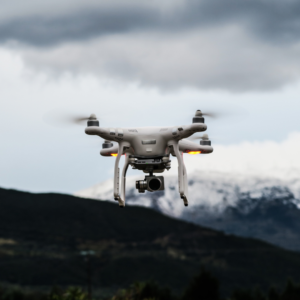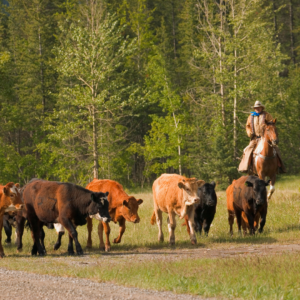
In the realm of wildlife conservation, collaboration is not just beneficial – it is the key to progress and forward momentum.
Drone technology can unite livestock owners, conservation groups, and government agencies to create dedicated advocates for this innovative solution to non-lethal wolf-livestock conflict management.
We use the term “stakeholders” a lot but we want to be clear about the context in which we use it. Stakeholders are representatives of different groups or interested parties in various aspects of conservation work. For instance, when we’re talking about wolf-livestock management, we’re thinking of the following stakeholders:
When diverse groups, like the stakeholders mentioned above, come together, everyone benefits from shared resources and knowledge to foster more innovative and effective solutions. Joint efforts enhance research opportunities, enabling more comprehensive studies that integrate more diverse data sources – basically, we’re getting more information that can lead to significant breakthroughs in non-lethal wildlife management.
Moreover, collaboration increases funding and resource allocation. We keep saying it, but we’re stronger together, and that also means when it comes to raising funds. Government agencies face funding restrictions that other stakeholders simply don’t have.
The broad support from a range of stakeholders bridges gaps and plays a major role in swaying public opinion. If we are all coming together for a solution, this unified front legitimizes our efforts and encourages community involvement and support from all members of the community, which is essential for long-term success.
Each local community faces its own unique challenges when it comes to non-lethal wolf-livestock management, which is why it is important to invite local community members into the fold. Those affected by environmental changes or impacts to their livelihood should have a voice and seat at the table, especially as we discuss strategies that are going to impact them. The fact that USDA & Wildlife Services’ effort to do just that has led to cooperation at a local level that is beyond impressive.
In conservation work, we often see ranchers and agribusiness portrayed as the bad guys. That view is so narrow and it has prevented a lot of folks from coming together to focus on common solutions. In fact, back in 2023, Todd Nash, the president of the Oregon Cattlemen’s Association, was quoted as saying
when discussing the topic of drone hazing. Ranchers are excited about the potential of this technology, so that begs the question – why aren’t conservation advocates more excited?
